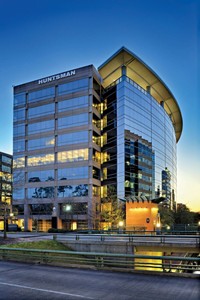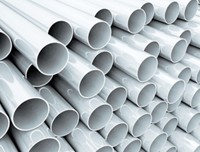Advertisement
Grab your lab coat. Let's get started
Welcome!
Welcome!
Create an account below to get 6 C&EN articles per month, receive newsletters and more - all free.
It seems this is your first time logging in online. Please enter the following information to continue.
As an ACS member you automatically get access to this site. All we need is few more details to create your reading experience.
Not you? Sign in with a different account.
Not you? Sign in with a different account.
ERROR 1
ERROR 1
ERROR 2
ERROR 2
ERROR 2
ERROR 2
ERROR 2
Password and Confirm password must match.
If you have an ACS member number, please enter it here so we can link this account to your membership. (optional)
ERROR 2
ACS values your privacy. By submitting your information, you are gaining access to C&EN and subscribing to our weekly newsletter. We use the information you provide to make your reading experience better, and we will never sell your data to third party members.
Business
Dow Battles Back
A dispute over strategy pits Dow’s management against a big shareholder
by Alexander H. Tullo
November 24, 2014
| A version of this story appeared in
Volume 92, Issue 47

Daniel S. Loeb crashed Andrew N. Liveris’s party.
Loeb, head of the activist hedge fund Third Point, has been hectoring Liveris, Dow Chemical’s chief executive officer, all year. Loeb wants Dow to split into separate specialty and commodity chemical companies. He maintains that Dow’s strategy of integrating value-added specialties with low-cost petrochemical raw materials adds unnecessary overhead. Compared with petrochemical peers such as LyondellBasell Industries, Dow should be earning $2.5 billion more per year than it does, he argues.
Liveris hoped Dow’s annual investor forum, held earlier this month near its flagship chemical complex in Freeport, Texas, would shut Loeb down. Instead, immediately following the event, Third Point’s peaceful protests turned into open insurgency. The hedge fund, which owns 2.3% of Dow, launched a campaign to recruit other disgruntled investors and threatened to nominate two independent directors to Dow’s board.
Making and selling commodity chemicals is a losing strategy in the long run, Liveris told reporters the morning before the investor forum. He cited Union Carbide, which had become a commodity-oriented firm by the time Dow purchased it in 2001. “That is a cyclical commodity company with no control of its destiny except the whims of the markets,” he said.
Making commodities is only worthwhile if they serve as raw materials for higher-margin, differentiated products downstream, Liveris argued. Having value-added chemicals at the end of a long supply chain, he said, gives Dow a way to make money that its commodity rivals, including LyondellBasell, don’t have.
But Third Point counters that Dow doesn’t disclose to investors where in the supply chain it’s making money. Indeed, when asked about the split in its plastics business between commodity and specialty grades, James R. Fitterling, Dow’s vice chairman of business operations, couldn’t offer up a number.
Although Dow has realigned business segments in an attempt to better explain how they mesh, some stock analysts complain that the company is still too opaque. “Dow’s investor day didn’t provide any quantification of the integration benefits,” observed UBS analyst John Roberts in a note to investors.
At the event, Dow said its strategy is beginning to pay off as R&D initiatives, years in the making, hit the market. A favorite of Liveris’s is Enlist, a system Dow AgroSciences launched this month to combat weed resistance to glyphosate. Enlist pairs the herbicides 2,4-D and glyphosate with corn and soybean seeds genetically engineered to tolerate them. 2,4-D has been around for nearly 60 years, Liveris said, but Dow researchers have “reinvented it and made it a specialty again” with a new salt form that drifts less in the environment.
On the other end of its business spectrum, the company is investing heavily in commodity chemicals. In Saudi Arabia, Dow is building a massive, $20 billion complex with Saudi Aramco. It is also spending billions in Freeport on basic chemical plants.
These investments will soon deliver as well, according to Liveris. Next year, plants in Saudi Arabia and Texas will begin to open, yielding earnings instead of costs.
Dow won’t oblige Loeb by splitting in two, but it is planning up to $8.5 billion in divestitures by mid-2016. Earlier this month, the company signed a deal to sell its Angus Chemical nitroalkanes business to Golden Gate Capital for $1.2 billion. Liveris said Dow is nearing transactions for its chlorine and derivatives units as well.
Liveris has no plans for major new acquisitions. Instead, he is putting money toward an increased dividend and a share repurchase program that was just upped by $5 billion.
Normally, investors like money in their pockets, but Third Point wasn’t buying it. Just hours after the meeting ended, the hedge fund launched value-dow.com, intended to be the propaganda arm of Loeb’s rebellion.
On the website, Third Point posted a video that apes the style of political attack ads, complete with dramatic music, gray smokestacks, and a baritone narrator. “It’s a story of an American icon, known globally for its legacy of innovation and its products,” the narrator intones. “But it has become a story of broken promises.”
Such promises, the video points out, include a 2008 pledge by Liveris never to cut the dividend. The firm lowered its dividend months later while it was trying to finance its purchase of Rohm and Haas.
Third Point also named an advisory board of two executives who will “provide guidance” on how Dow can increase value. One is Robert S. Miller Jr., chairman of the insurance firm American International Group; the other is Raymond J. Milchovich, former CEO of the engineering company Foster Wheeler. Unless Dow caves, Third Point will likely nominate the two men as Dow directors next spring.
Dow wasn’t amused by Third Point’s new website. “The statements contained therein display a fundamental lack of understanding of the company and an approach by an activist investor that has little interest in anything that benefits the many long-term shareholders in Dow,” the company responded.
The battle for hearts and minds should play out over the next six months. Unless the two sides agree to an armistice, Dow watchers should expect a showdown at the firm’s stockholders meeting come spring.





Join the conversation
Contact the reporter
Submit a Letter to the Editor for publication
Engage with us on Twitter